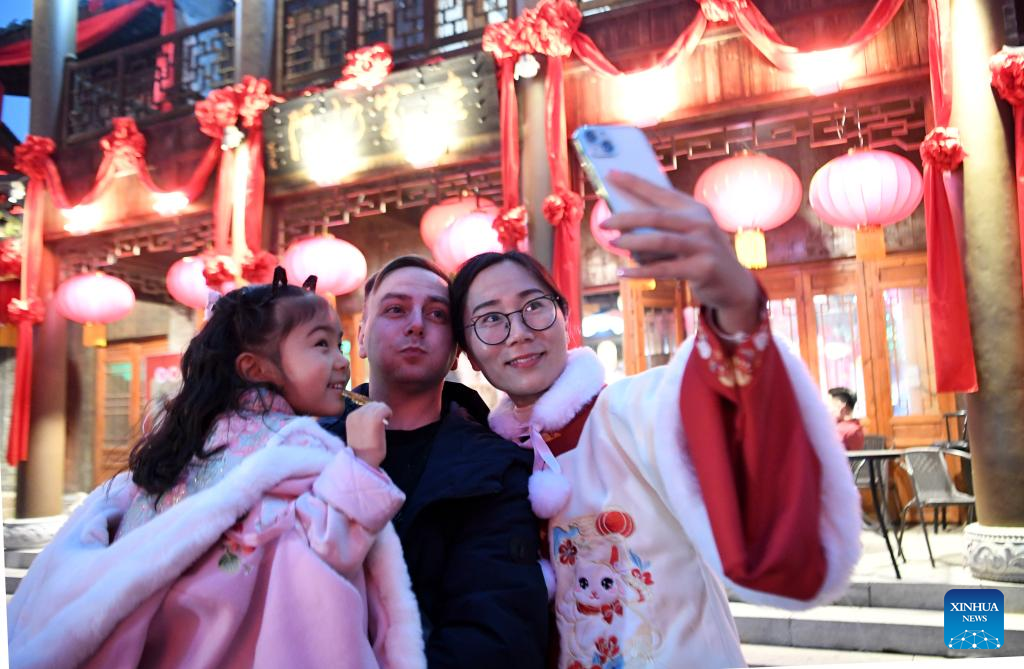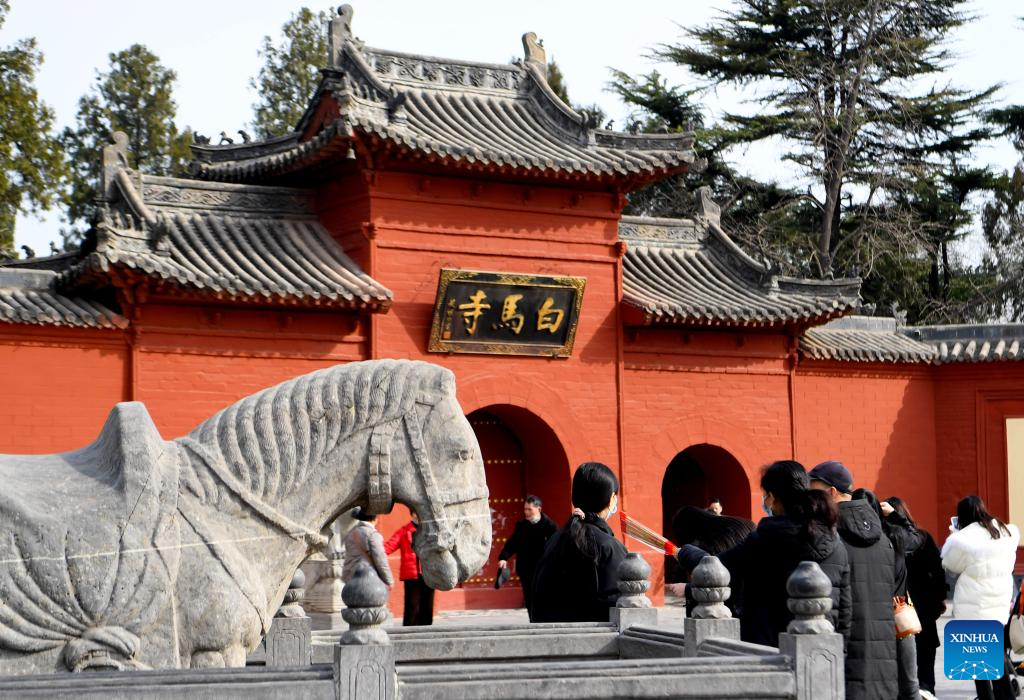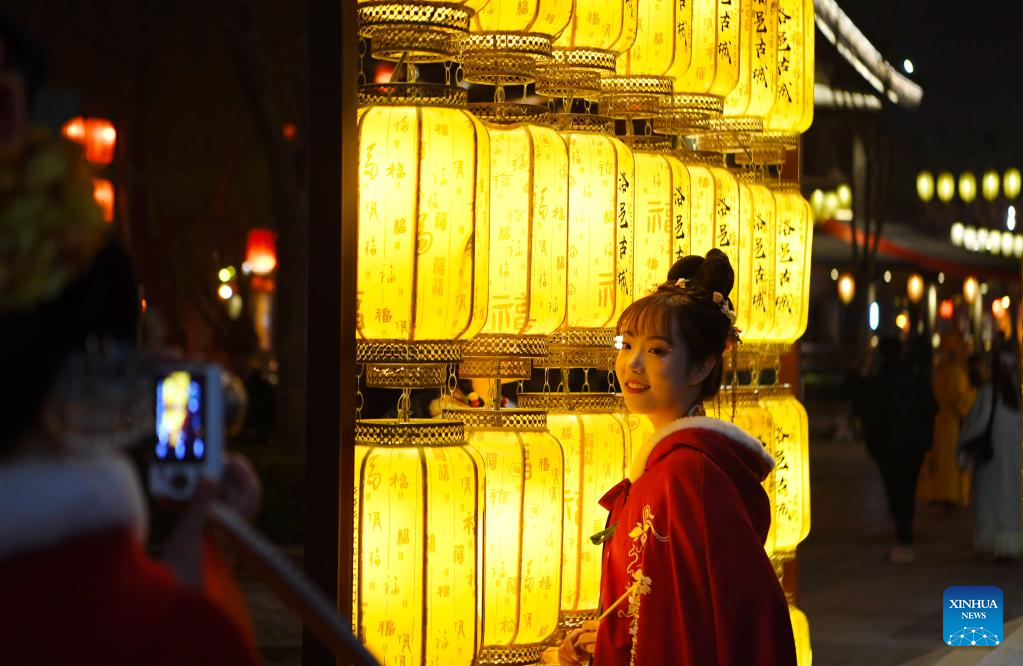Across China: Ancient city explores innovative transformation to gain new vitality
Luoyang, an ancient capital city in central China's Henan Province, has been a dazzling name amid the splendid Chinese civilization -- with over 4,000 years of history, the city served as the capital for 13 Chinese dynasties.
Present-day Luoyang is home to five capital city ruins, six UNESCO World Heritage sites, 197 cultural relic units under national and provincial protection, 9,000 pieces of immovable cultural relics, and 102 museums.
While strengthening the preservation of cultural relics with tailored measures, Luoyang has, in recent years, explored innovative transformation and injected new vitality into its historical and cultural treasures.
Since 2020, Luoyang has been accelerating the digital transformation of its historical and cultural heritages. Many museums have added digital equipment and applied digital technologies such as 3D and virtual reality to increase interactive and immersive activities and capture the attention of visitors, especially young people.
In the 760-square-meter digital interactive hall of the Erlitou Site Museum of the Xia Capital, an immersive 3D space created by nearly 40 projectors reproduces the grandeur of the Erlitou ruins.
The Erlitou ruins were discovered in 1959 and have been identified by archaeologists as one of the capital cities during the Xia Dynasty (2070 B.C.-1600 B.C.).
The digital exhibit showcases the dynasty's capital city, handicraft workshops, and sacrificial ceremony, providing visitors with impressive visual effects, said Gong Wanyu, director of the museum's digital information department.
The peony museum in Luoyang, the country's only peony-themed museum, has also opened an interactive area at the museum's exhibition hall, displaying a variety of cultural relics and other items related to peony culture through digital technology.
After visitors step on a Chinese character on the ground, a poem related to that character will appear immediately. After visitors walk through the gallery, peonies bloom with their footsteps and change into different shapes and colors.
Currently, the museum's digital exhibits account for about 70 percent of the total. Li Danyao, a docent of the museum, said the digital technology application has broken the traditional static exhibition mode and improved the audience's immersive experience.
Luoyang is also providing tourists with an immersive cultural experience through a mix of shopping, dining, and other recreational activities.
In a live-action role play (LARP) shop in the old town of Luoyang, players can don traditional apparel and experience various roles from more than 1,000 plays. These plays have turned historical ruins, museums, and historical scenic spots into the stage of LARP, allowing players to have an immersive experience of ancient times.
Luoyang strives to become a national immersive cultural tourism destination in 2025 and China's "capital of LARP." The city has completed the building of an LARP industrial park with an area of 20,000 square meters.
During this year's peony cultural festival in Luoyang in April, the city received 12.32 million visitors in 20 days, becoming one of the country's most popular tourist destinations. The topic related to LARP was read 120 million times on Weibo, one Chinese social media platform.
From January to May this year, Luoyang received a total of 61.68 million tourists, with a total revenue of 45.2 billion yuan (about 6.3 billion U.S. dollars), an increase of 116.96 percent and 154.63 percent year on year, respectively.
"The digital transformation and immersive recreational activities allow visitors to interact with cultural relics in a new way, injecting new vitality into the historical and cultural treasures and helping visitors fully experience the profound history and culture of the ancient capital," said Wang Li, deputy director of the Erlitou Site Museum of the Xia Capital.

People take selfies at the Luoyi ancient city in Luoyang, central China's Henan Province, Jan. 13, 2023.

Tourists visit the Baima Temple, or White Horse Temple, in Luoyang, central China's Henan Province, March 1, 2023.

A tourist poses for photos at the Luoyi ancient city in Luoyang, central China's Henan Province, Feb. 28, 2023.
Xinhua
Other posts by Xinhua
Contact author
blog comments powered by